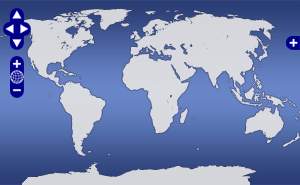Mid-Atlantic Ridge residual mantle Bouguer gravity anomaly data (netCDF format) between the Fifteen-Twenty and Marathon fracture zones, 13°-15°N
Gravity data collected during KN182-03 were combined with the gravity data from Fujiwara et al. (2003) and processed as described by Smith et al (2008). The free-air gravity data were reduced to obtain the mantle Bouguer and the residual mantle Bouguer anomalies (MBA and RMBA, respectively) following standard procedures (Kuo and Forsyth, 1988; Prince and Forsyth, 1988). The effects of the water-crust and crust-mantle interfaces were subtracted from the free-air gravity anomaly along tracks to obtain MBA using the method of Parker (1973), and assuming a crustal thickness of 5 km. Densities of water, crust, and mantle were assumed to be 1030, 2750, and 3300 kg/m3, respectively (Escartin and Cannat, 1999). The gravity thermal effect due to spreading was calculated using a passive upwelling model and the ridge geometry (Phipps Morgan and Forsyth, 1988). The calculated thermal effect was removed from the MBA along tracks to obtain the RMBA, which was then gridded. The data were gridded for 13°-15°N and the grid covers the Mid-Atlantic Ridge between the Fifteen-Twenty and Marathon fracture zones. The file presented here is in GMT-compatible netCDF grid format.
Smith, Deborah
Investigator
WHOI
Escartin, Javier
Investigator
ENS
Fujiwara, Toshiya
Investigator
JAMSTEC
Quality
2
The data have been processed/modified to a level beyond that of basic quality control (e.g. final processed sonar data, photo-mosaics).
Data Files
References
Data Citation Information
ISO/XML Metadata
Expand

 Map View
Map View
